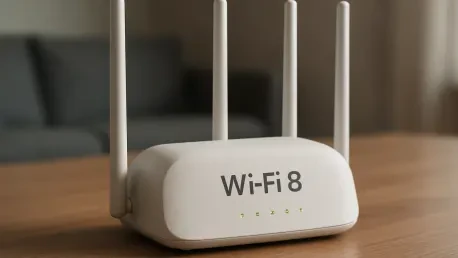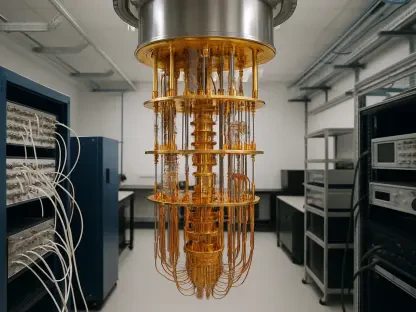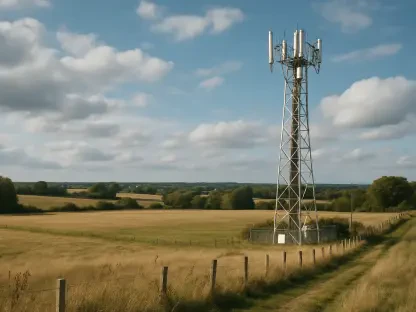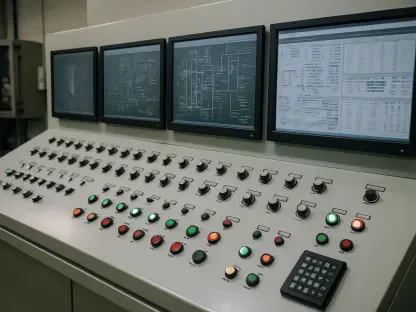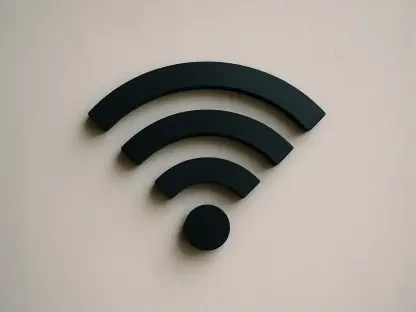In a significant technological leap, WiFi 8 is set to revolutionize how devices connect and interact across various sectors, making connectivity more seamless and efficient. This new era in wireless LAN technology is poised to offer substantial improvements over previous generations, primarily focusing on ultra-reliable performance and minimizing latency. As devices and applications grow more sophisticated, the need for consistent, low-latency connections becomes essential. WiFi 8 aims to deliver on this need, presenting groundbreaking opportunities for fields such as augmented reality (AR), artificial intelligence (AI), and robotics. Unlike its predecessors that prioritized speed and coverage, WiFi 8 is tailored to ensure low latency, an essential feature for modern technology applications demanding real-time data exchange.
Technological Innovations and Challenges
A Focus on Low-Latency Connectivity
WiFi 8 introduces an array of technological advancements that prioritize reducing worst-case delays in wireless communication. Traditionally, WiFi networks must operate amidst various challenges in the unlicensed spectrum, which includes sharing frequencies with multiple devices and technologies. As Klaus Doppler from Nokia clarifies, the inconsistencies caused by earlier standards could significantly affect performance, especially in crowded settings. Delays in such environments could previously reach 100 milliseconds, severely hampering performance in applications reliant on rapid data transmission such as virtual reality and robotics. WiFi 8 seeks to address these issues by focusing not only on speed and coverage but, more importantly, on maintaining low latency to ensure a smooth operational flow.
One critical innovation in this endeavor is WiFi 8’s ability to mitigate transmission collisions. During a collision, traditional networks would force devices into back-off periods, causing unwanted delays. By including methods that give priority to latency-sensitive traffic, WiFi 8 significantly reduces these interruptions, thereby maintaining the integrity and responsiveness of data transfer. Additionally, WiFi 8 enables devices to gracefully transition from congested primary channels to less crowded ones, thereby optimizing spectrum efficiency and ensuring uninterrupted communication. Such innovations are crucial for environments requiring high reliability and minimal interruptions, thus paving the way for enhanced application functionality.
Standardization and Interoperability Challenges
The development of WiFi 8 within the IEEE 802.11bn framework underlines a commitment to interoperability, essential for a technology serving over 21 billion devices worldwide. Standardization efforts focus on enhancing key performance indicators by at least 25% compared to WiFi 7, thus ensuring improvements are universally applicable. The roadmap involves rigorous testing and validation to handle challenges posed by the wide array of existing devices, ranging from WiFi 4 to WiFi 6. Ensuring backward compatibility without sacrificing new capabilities is critical, particularly as legacy devices continue to operate alongside newer ones.
Moreover, the testing of advanced features like Multi-AP Coordination (MAPC) requires sophisticated protocols, as these features involve intricate interactions among multiple access points. MAPC exemplifies how WiFi 8 enhances network efficiency through advanced techniques like coordinated beamforming and spatial reuse. The challenge is ensuring these features work seamlessly with varying device capabilities, stressing the importance of precise standardization. These efforts underscore the critical role of collaboration, as contributions from various partners in chipset manufacturing, device development, and service provision contribute to the network’s global functionality and stability.
The Future of Connectivity with WiFi 8
Transformative Features Enhancing User Experiences
WiFi 8’s introduction heralds a new era of connectivity where reliability and intelligently managed networks redefine user experiences. Beyond traditional benchmarks of speed and coverage, this generation provides unique enhancements adapted to modern requirements. Multi-AP Coordination, for instance, offers substantial benefits by reducing interference through cooperative communication strategies among access points. It facilitates better spectrum sharing, leading to more efficient data handling in dense environments, such as airports and large offices, where signal congestion is frequent.
Another notable feature is WiFi 8’s seamless roaming capability. It enables smoother transitions between network zones without dropping connections, an essential feature for mobile and handheld devices moving across areas as diverse as smart cities or industrial plants. Power-saving mechanisms are importantly enhanced, allowing devices more autonomy without compromising connectivity. Intelli-agent management frameworks utilizing AI for real-time performance optimization ensure that shifts in network demands are dynamically addressed. These capabilities ensure WiFi 8 doesn’t just meet fundamental connectivity needs but extends the possibilities of applications through smarter, adaptive technology.
Timelines and Industry Implications
With the development pace accelerating, WiFi 8 is nearing a defining milestone with the expected completion of Draft 1.0. This stage sets the course for a systematic refinement and validation phase expected to last a year. By late 2027 or early 2028, the first commercial devices utilizing WiFi 8 are set to hit the market, promising a wave of advancements to follow. As the industry prepares for its rollout, various stakeholders must align their strategies to harness the full potential of this technology. Chip manufacturers and OEMs are prompted to commence early development, ensuring products are compliant with upgraded standards from the outset.
Network operators are advised to integrate WiFi 8 within broader network ecosystems, anticipating the enhanced performance possibilities for subscribers. Regulatory bodies have a responsibility to ensure the availability of unlicensed spectrum, a necessary foundation for supporting these technological advancements on a broad scale. Looking ahead, as WiFi 8 becomes mainstream, it is poised to redefine what is possible in wireless communications, facilitating environments conducive to technological innovations and enriched user interactions.
Unveiling New Connectivity Horizons
WiFi 8 introduces significant advancements designed to minimize worst-case delays in wireless communications. Traditionally, WiFi networks face challenges in the unlicensed spectrum, including shared frequencies with numerous devices and technologies. Klaus Doppler from Nokia notes that previous standards’ inconsistencies could severely impact performance, especially in crowded environments. In these situations, delays could reach 100 milliseconds, which posed serious issues for applications dependent on rapid data transmission like virtual reality and robotics. WiFi 8 aims to address these problems by not just focusing on speed and coverage but ensuring low latency for a seamless operational flow.
A key innovation in this effort is WiFi 8’s ability to manage transmission collisions. Traditional networks, when faced with collisions, often force devices into back-off periods, resulting in delays. By prioritizing latency-sensitive traffic, WiFi 8 reduces interruptions, maintaining data transfer’s integrity and responsiveness. Additionally, WiFi 8 allows devices to switch from congested main channels to less crowded ones, optimizing spectrum use and ensuring smooth communication. These innovations are vital for environments needing high reliability and minimal interruptions, enhancing application performance.
